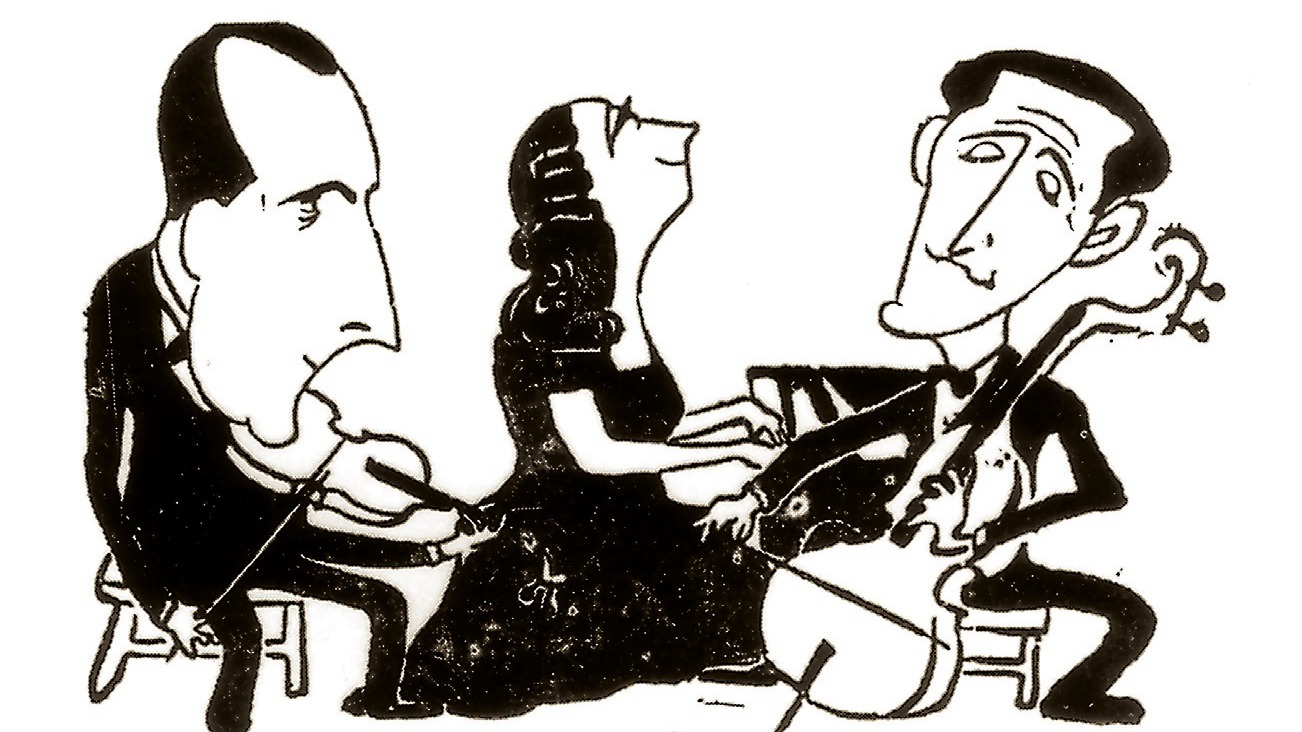Painting
Press Contact
SISU News Center, Office of Communications and Public Affairs
Tel : +86 (21) 3537 2378
Email : news@shisu.edu.cn
Address :550 Dalian Road (W), Shanghai 200083, China
Further Reading
JEWS IN SHANGHAI | The Love Story of the Deaf-mute Jewish Painter David Bloch
15 September 2016 | By By Li Li / trans. Huang Xie'an | Copyedited by Gu Yiqing
Editor's Note: During the World War II, more than 30,000 Jews, under attack by the Nazis in Europe, fled to Shanghai, China and 16,000 of them took refugee in this city. Meanwhile, the local Shanghai people were also in an abyss of pain inflicted by the Japanese invasion. Though the time was difficult, gratitude and mutual friendship lived on in the heart of the Jewish and Chinese people. The Shanghai Jewish Refugees Museum and Shanghai International Studies University (SISU) launched a initiative early this year to present those touching stories in Chinese, English, German and Hebrew. This is one of the selected stories in the project to commemorate the history of Jews in Shanghai.
|
D |
avid Bloch is a deaf-mute Jewish painter and a former Jewish refugee in Shanghai. He fell in love with a Chinese girl who was also deaf, and married with her. The Chinese girl’s love was a great comfort during his exile life in Shanghai, and his experience in Shanghai has become the major source of his inspirations for painting.
On the evening of November 9, 1938, the Nazis smashed a large number of homes and stores belonging to Jews, as well as Jewish synagogues. It was the so-called Crystal Night, which marked the beginning of a larger and crueler wave of anti-Semitism. Afterwards, the Nazis arrested a number of Jews, including the young artist David Bloch who was sent to the Dachau concentration camp. Later, David was released, first because he was deaf-mute, and also because a lot of people tried to get him out. David then went to Munich where he received a telegraph from his cousin in the USA telling him to go to Shanghai. Yes, the telegraph had only three words: Go to Shanghai. David followed his cousin’s advice and managed to obtain a ship ticket that took him to Shanghai.
All deaf-mutes in the world share a common language: sign language. So it was easier for David to communicate with deaf people in Shanghai and he made two deaf friends soon. The friends often took David to gatherings of deaf people in Shanghai and in 1941 he met a deaf girl at one of the parties. They fell in love with each right away. In 1946, David married with the local deaf girl in Shanghai. There were cultural differences, of course, but they had not deterred their love and mutual understanding. David could very well feel his Chinese wife’s passion for life from her simple signs, and the couple developed a special empathy as time moved on. In their daily life, the deaf Chinese wife took very good care of David, a lonely artist in exile. Their affection lasted until she died in the USA.
During his stay in Shanghai, David also met a friend called Chen. Chen was not only good at playing Chinese music instruments like flute and Pipa, but also singing traditional Chinese operas. He often took David to other Chinese families. The local Chinese were very friendly to David. Although their living condition was tough, they would keep him for dinner. In this way, David made a lot of Chinese friends including quite a few artists. They taught him speaking the local dialect and calligraphy, and one of them gave him a local name Bai Lv Hei, similar to the pronunciation of his German name.
His friendship with the local residents and artists of Shanghai has a great influence on David’s art. Based on his memory and intuition, he has imbedded a lot of affection for Shanghai in his paintings, and rickshaws were one of his favorite themes. He said that the rickshaw pullers were very kind and tough, and they were the symbols of China. In 1997, David published an album including 60 paintings of rickshaws and rickshaw pullers. For instance, there was a picture of six rickshaw pullers pulling a broken-down truck.
In some sense, life in Shanghai is the biggest source of David’s artistic inspirations.
Press Contact
SISU News Center, Office of Communications and Public Affairs
Tel : +86 (21) 3537 2378
Email : news@shisu.edu.cn
Address :550 Dalian Road (W), Shanghai 200083, China


